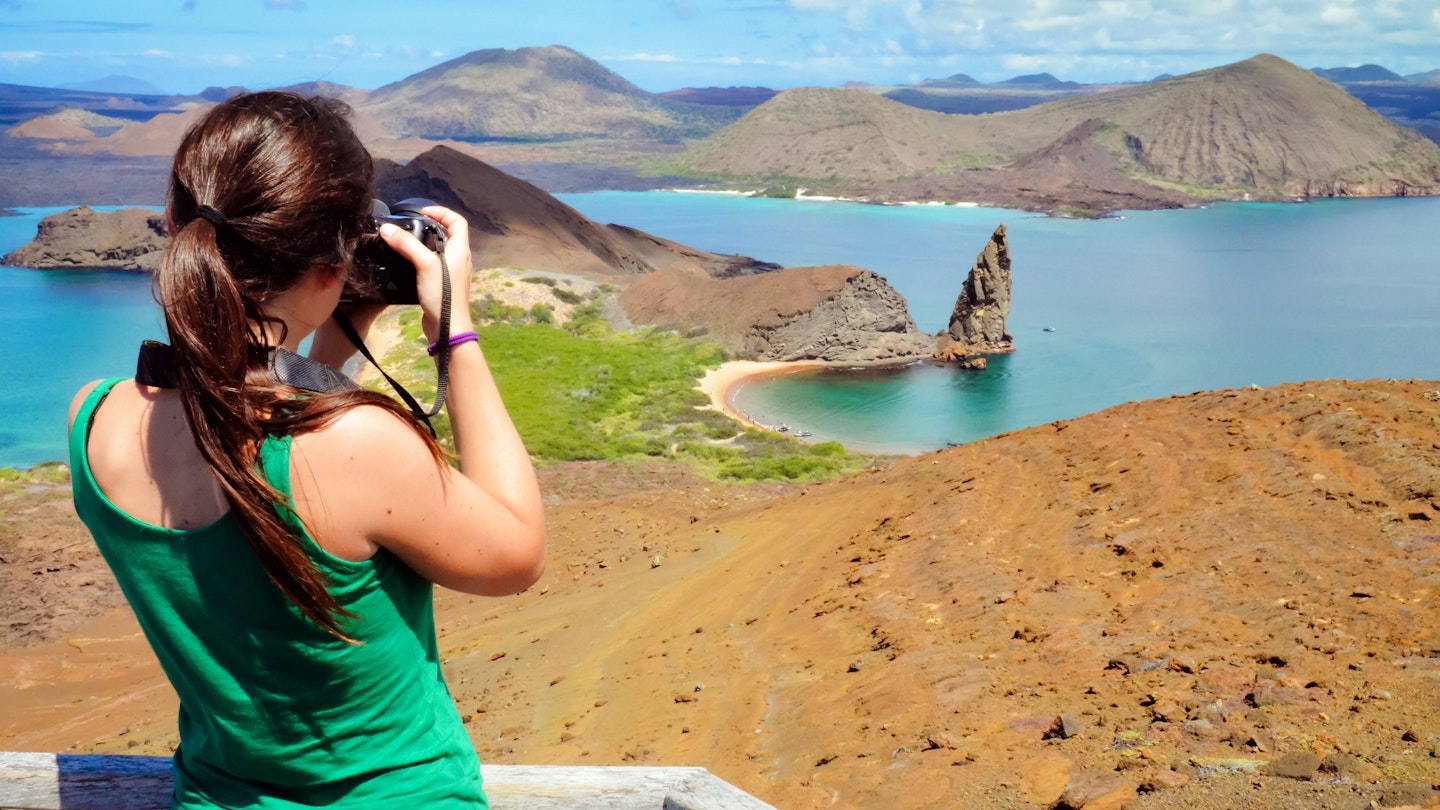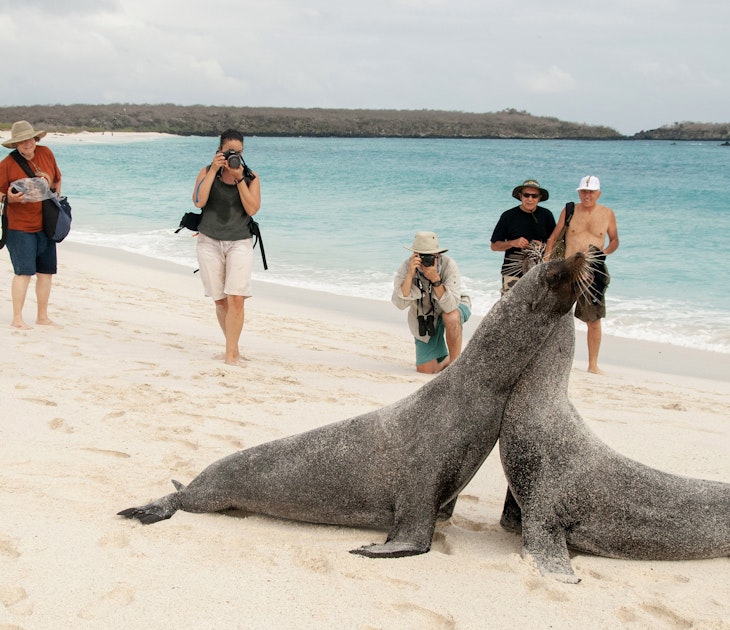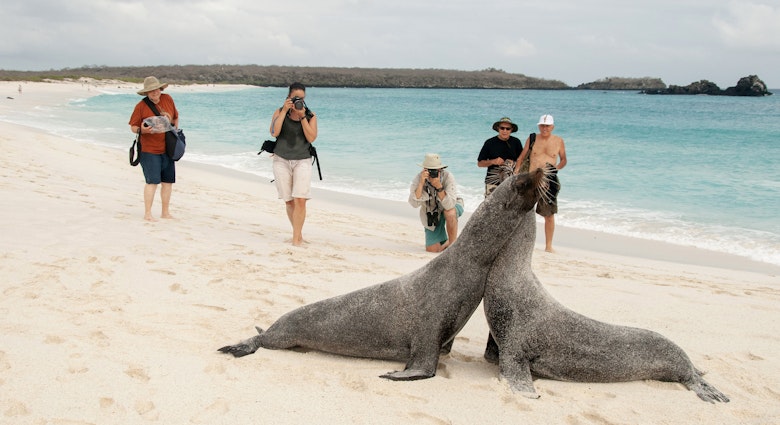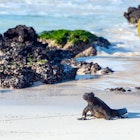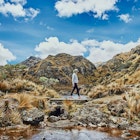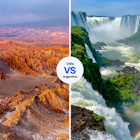The Galápagos Islands steal the show, of course, but Ecuador is blessed with a full hand of national parks and protected reserves, preserving stunning, wildlife-filled terrain from the Andes to the Amazon.
The Galápagos may be the best national park in Ecuador (some would say the world), but don’t leave the region without visiting Ecuador’s other national parks, which offer dizzying scenery and abundant wildlife, calling like a beacon to hikers, photographers and birders.
Here's our pick of the best national parks in Ecuador.
Galápagos Islands
Best for unique wildlife
Nowhere on Earth has contributed quite as much to our understanding of the natural world – and our own place in it – as the Galápagos Islands. It was here that Charles Darwin developed and honed his theory of natural selection, as he studied the archipelago’s unique wildlife, noting how it had evolved in unique forms in isolation from the rest of the world.
Darwin’s legacy still looms large over the Galápagos, which in less enlightened times was used as a penal colony. Pirates, whalers and eccentric German settlers also left their mark on the archipelago, providing an interesting human subplot to a wildlife-spotting tour.
But it really is all about the wildlife: the giant tortoises, the pirouetting sea lions, the breaching whales, the twittering finches, the gliding rays, the pelicans, sharks, penguins, the salt-sneezing iguanas, to name just some of the more famous protagonists.
On land you might wonder what all the fuss is about – the islands appear barren, forlorn and weather-beaten in places – but if you don a mask and snorkel or scuba gear and slip beneath the waves, this Eden soon reveals its secrets. You’ll leave altered by the experience.
Visiting the Galápagos Islands
With much of the national park off-limits to regular folk, and large distances between the islands, there really is only one way to visit – on a liveaboard cruise. You’ll want three nights, minimum, to give you time for excursions onto some of the islands and some underwater encounters.
Vessels plying the wildlife-rich waters call at multiple islands, but Santa Cruz and Isabella – home to giant tortoises – feature on most itineraries. If you like birding, make sure Genovesa Island is on the list; its solidified lava fields and wind-swept forests are home to owls, finches and iconic blue-footed boobies, among other feathered inhabitants. For the chance to witness the unusual spectacle of penguins darting among tropical fish, choose a ship that calls at Sombrero Chino Island and offers snorkeling or diving excursions.
How much does all this cost? Well, you can expect to pay upwards of US$250 per person per day, including meals, excursions and naturalist guides, who will act like your own personal David Attenborough for the duration of the trip. Note that the entrance fee to Galápagos National Park (US$110) and transport to the Galápagos Islands (flights cost around US$300 from Guayaquil, or US$340 from Quito) are not included in these prices.

Cotopaxi National Park
Best for wannabe mountaineers
There are many reasons why Cotopaxi is one of the best national parks in Ecuador – and bragging rights are one of them. If you can reach the summit of the mountain that sits at the heart of this wilderness park near Latacunga then you have conquered the most active volcano in Ecuador, experiencing terrain normally reserved for mountaineers.
But these bragging rights don’t come easy. Altitude sickness defeats many attempts on the summit, although the dramatic scenery is some consolation for those who fall short. Pace yourself and allow time to acclimatize for the best chance at a summit shot.
Almost a perfect cone, the 5,897m (19,347ft) stratovolcano is capped with snow and flanked by forests, grasslands and silent herds of vicuña – a wild relative of the domesticated llama. And the views from the top? Simply spectacular.
Visiting Cotopaxi National Park
Those going for glory should hang around the park for a couple of days before attempting the climb to acclimatize to the altitude. Bed down at Hacienda San Agustín de Callo, a pretty colonial hacienda built on top of Inca ruins. If you’re on a tighter budget, try Cuella de Luna, which is also charming.
Guides and mountain trekking gear (including crampons) are necessary to scale Cotopaxi. Gulliver Expeditions can provide both from $290 per person. You’ll need two days for the hike: one day to climb to the Jose Rivas refuge, where you'll sleep for a few hours, and the second day for the early-morning, six-hour ascent to the summit. Assuming all goes well, you’ll get there for sunrise, then it’s back down to brag on Instagram with some epic photos (or curse the altitude sickness that thwarted your attempt).
Cajas National Park
Best for accessible hiking
A nice easy one for visitors, but still rewarding. Cajas National Park can be visited on a comfortable day trip from Cuenca and offers gentle (compared to Cotopaxi, at least) but uplifting Andean scenery, with lakes, waterfalls and luscious Lord-of-the-Rings-esque flora. No guides are necessary here, just make your way to the reserve by bus or taxi, don your boots and follow the trails. Keep your eyes peeled for alpacas, Andean condors and giant hummingbirds while you walk.
Visiting Cajas National Park
There are buses to Cajas National Park from the main bus station in Cuenca (one hour, US$2). Make sure you have comfortable hiking boots, waterproofs, warm clothes and sunscreen, and bring food and plenty of water with you. The red route (Ruta1) is the easiest trail – a hike of around 3.5 hours.

Yasuni National Park
Best for seeing the Amazon Rainforest
Yasuni National Park is jaguar country – a place where spider monkeys swing from trees, caymans stalk the waterways, ocelots prowl the forest floor and the dawn chorus of tropical birdlife almost deafens. Those who venture here may encounter pink dolphins, giant otters, piranhas, manatees, uncontacted tribes, and so much more. Needless to say, this is not a place to tackle without a guide.
Considered to be one of the most biologically diverse places on the planet, Yasuni is in the heart of the Amazon – it's not only one of the best national parks in Ecuador, but one of the best in South America. With the chance to get deep into the forest by boat or on foot, you can see why some prefer it to Galápagos Islands. Beneath this Eden are abundant oilfields, which some companies are controversially drilling, posing a threat to the natural order – all the more reason to tread lightly if you visit.
Visiting Yasuni National Park
You’ll need to plan well ahead and allow the best part of a week for a trip to Yasuni. Many come on all-inclusive tours, but another way to visit is to book a hut at Eden Amazon Lodge. It’s owned by Kichwa indigenous people and offers three-night stays on the edge of Yasuni from US$690. This includes naturalist guides, all meals, use of dugout canoes, entrance fees and transfers from the oil town of Coca.
There are direct flights to Coca from Quito (one hour, US$200 return). Alternatively, there are daily buses from Quito’s Quitumbe bus terminal (7 hours, from US$7).

Machalilla National Park
Best for a Galápagos-like experience on a budget
If the Galápagos Islands are too much of a stretch, then take comfort in the relative accessibility of Machalilla National Park. This coastal reserve northwest of Guayaquil takes in jungles, beaches and islands, including Isla de la Plata – often described, somewhat unfairly, as a “poor man’s Galápagos.”
Here you will see some of the iconic species that also grace the Galápagos, including blue-footed boobies, manta rays, sea turtles and magnificent frigate birds with their puffy red chests. And you can see them for a fraction of the cost of a Galapagos trip.
If you head inland, you may encounter armadillos, monkeys and yet more birds, including the handsome belted kingfisher. There’s also Agua Blanca, one of the oldest archeological sites in South America, once an important settlement for the Manta people. It's now the center of an interesting community tourism project and you can swim in a natural mineral-rich pool.
Visiting Machalilla National Park
Day trips to Isla de la Plata depart most mornings from the fishing village of Puerto Lopez. One seasoned operator is Aventuras la Plata, which offers tours for around US$45. Excursions inland can also be arranged through local operators in the village.
You may also like:
Getting around Ecuador by road, rail and plane
Ecuador's best road trips: Volcanoes, rainforest and the Pacific coast
The 9 best beaches in Ecuador: surf, party, and chill
